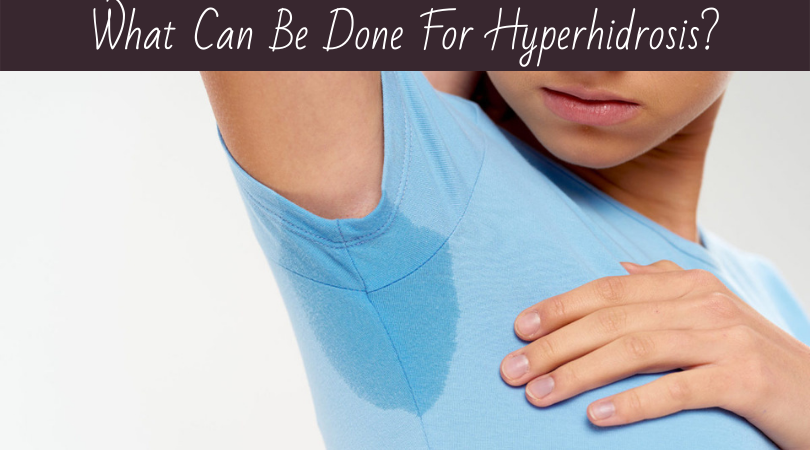 Sweat is a constant found in heat and intense physical activity. But someone sweats in a modest way, almost unnoticeable, while someone gets it in full: moisture instantly soaks a T-shirt or shirt, and sometimes even falls down from hands. This excessive sweating is called hyperhidrosis.
Sweat is a constant found in heat and intense physical activity. But someone sweats in a modest way, almost unnoticeable, while someone gets it in full: moisture instantly soaks a T-shirt or shirt, and sometimes even falls down from hands. This excessive sweating is called hyperhidrosis.
Sweating is not a disease. Sweat a lot – too. Doctors attribute hyperhidrosis not to diseases, but to the individual characteristics of a person. The reasons for this are the following.
The entire surface of our body is covered with sweat glands. They produce the moisture needed to maintain a normal body temperature. If it is not too hot around, and we are not too active, the daily amount of moisture evaporating from the skin is about 0.5 liters. At elevated ambient temperatures and / or intense physical activity, this volume increases and can reach 10 liters per day.
The amount of sweat secreted by our body is regulated by nerve impulses and the hormonal blood composition. The sweat glands respond to these signals in two ways:
Normally it looks in the following way. The body temperature went up, the heat-regulating center in the brain recorded growth, gave the necessary signals and the glands reacted: they increased the production of sweat and opened up. Moisture got on the surface of the skin and began to actively evaporate. The body temperature dropped – the glands decreased the production of sweat and closed.
The first symptoms of the essential form usually appear in childhood. At the same time, hyperhidrosis often goes unnoticed, and excessive sweating is attributed by the parents to the child’s physical activity or too warm clothes. The manifestations of hyperhidrosis increase sharply during puberty, starting to bring severe discomfort.
The intensity of sweating can be different: from a difficult to distinguish form of hyperhidrosis to very pronounced. In the case of profuse sweating, social maladjustment is added: the patient is exposed to pronounced professional restrictions and experiences problems in daily or personal life.
Against the background of constant and long-term discomfort, the quality of life suffers significantly and mood disorders are added up to depressive states and suicidal thoughts (more pronounced in adolescence). According to the American Academy of Dermatology, about 50% of people with hyperhidrosis are constantly depressed, and more than 80% have significant difficulty communicating even with loved ones.
It is not dificult to diagnose the disease – a conversation with the patient, recording of complaints and anamnesis, as well as a general examination are enough to make a diagnosis. The doctor can also conduct an iodine-starch test (Minor test) to assess the area of pathological sweating.
Treatment methods for the disease can be divided into three groups:
Traditional treatment regimens for hyperhidrosis include anticholinergics and cosmetic antiperspirants containing aluminum or zinc ions. Taking medications is aimed at reducing sweating, but in practice, the patient has to face a number of negative consequences (dry mouth, blurred vision) without any pronounced effect.
The application of special antiperspirants leads to the formation of a “protein-aluminum” complex, which temporarily clogs the opening of the sweat gland located on the skin surface. A significant drawback of these deodorants is a short-term effect and a compensatory increase in perspiration in untreated areas.
Surgical methods are currently used extremely limited due to the need for incisions and the introduction of the patient into anesthesia. At the same time, there is a risk of complications in the form of Horner’s syndrome, pneumothorax and damage to motor nerves by negligence, which leads to dysfunction of the limb. The result from surgical interventions is questioned due to the frequent development (in more than 60% of cases) of compensatory hyperhidrosis.
The most reasonable method of treating hyperhidrosis is injections of botulinum toxin type A (botox) into the problem area. The mechanism of drug action is the reversible and temporary blocking of sympathetic nerve fibers responsible for the secretion of sweat glands. Before intradermal botulinum toxin injections, the Minor test is performed. The effect of the procedure depends on the amount of botulinum toxin injected and lasts up to 6-8 months.
Category: General Info
Tags: healthcare, hyperhidrosis, treatment
© 2025 www.curesweatypalms.com. All rights reserved.